Managing disk partitions is an essential part of optimizing your Windows 11 system's storage. Deleting a partition can help you free up space, expand existing partitions, or reorganize your data storage. Here are several methods to delete a drive partition in Windows 11.
1. Using the Disk Management Utility
Step 1: Open the Disk Management utility by clicking on the Start Menu and typing Disk Management in the search bar. Select the 'Create and format hard disk partitions' option from the search results.
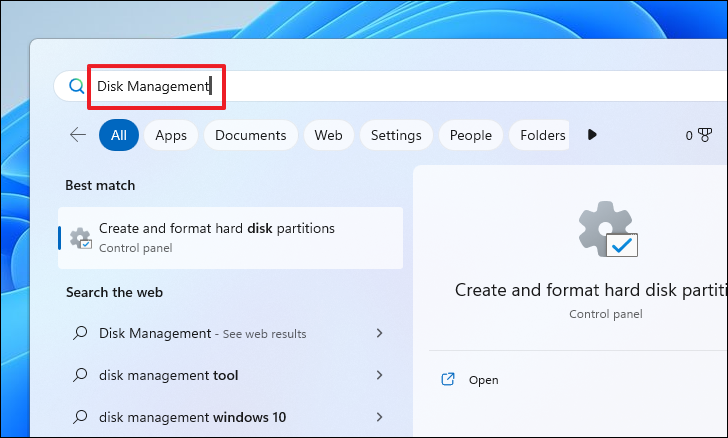
Step 2: In the Disk Management window, locate the partition you want to delete. Right-click on the partition and choose 'Delete Volume' from the context menu. Be sure to back up any important data from this partition before proceeding, as this action will erase all data on it.

Step 3: A warning message will appear, confirming that you want to delete the volume and that all data will be lost. Click 'Yes' to confirm the deletion.
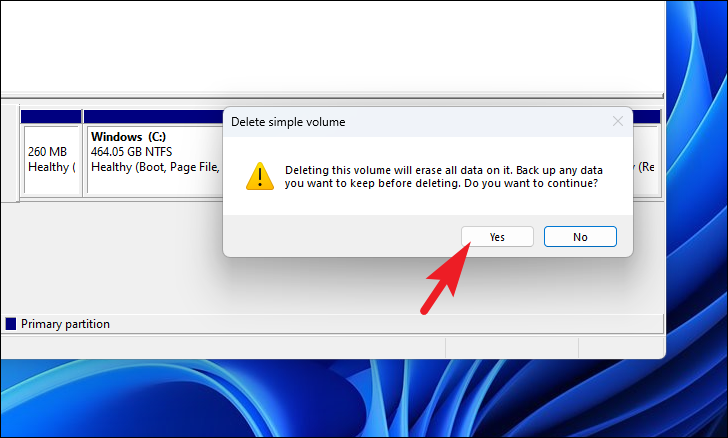
After confirming, the partition will be deleted, and the space it occupied will be marked as unallocated in the Disk Management utility. You can now use this unallocated space to extend another partition or create a new one.
2. Using Diskpart Command
Step 1: Open Command Prompt with administrative privileges. Click on the Start Menu, type Command Prompt, right-click on the 'Command Prompt' app, and select 'Run as administrator'.
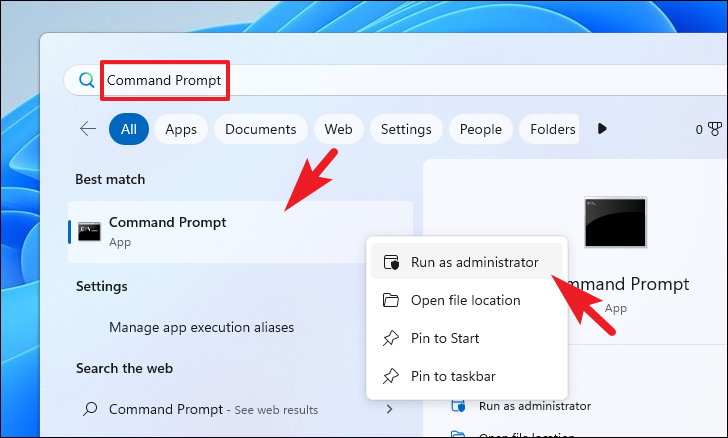
Step 2: If a User Account Control (UAC) prompt appears, click 'Yes' to grant administrative access.
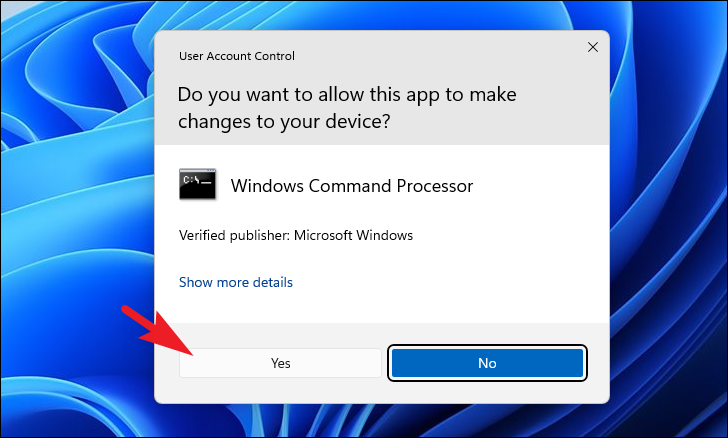
Step 3: In the Command Prompt window, type diskpart and press Enter to launch the DiskPart utility.
diskpart
Step 4: Next, type list volume and press Enter to display all the volumes on your system.
list volume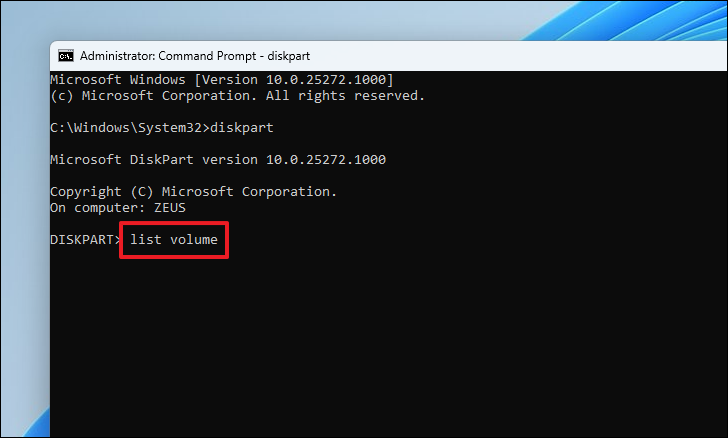
Step 5: Identify the volume number of the partition you wish to delete. Type select volume <volume number> (replace <volume number> with the actual number) and press Enter to select it.
select volume 4Note: Make sure to replace 4 with the correct volume number corresponding to the partition you want to delete.
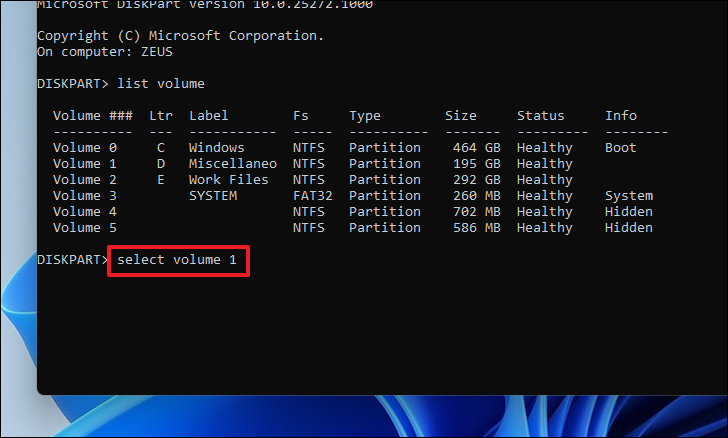
Step 6: Once the volume is selected, type delete volume and press Enter to delete it.
delete volume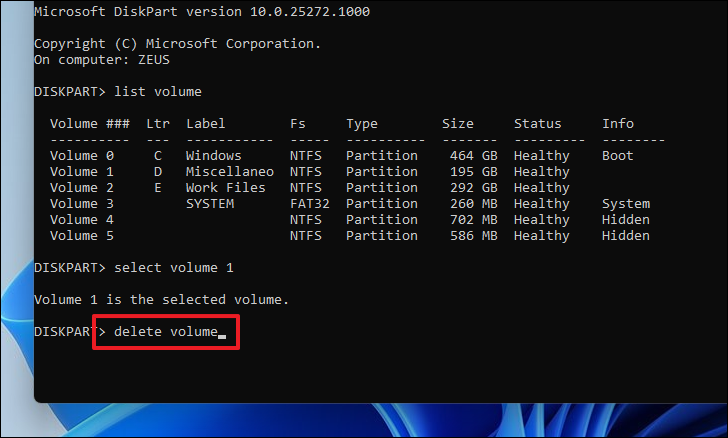
The selected partition will be deleted, and the space will become unallocated, which you can verify in Disk Management or by listing volumes again in DiskPart.
3. Using Windows PowerShell
Step 1: Launch Windows Terminal with administrative privileges. Click on the Start Menu, type Terminal, right-click on the 'Terminal' app, and select 'Run as administrator'.
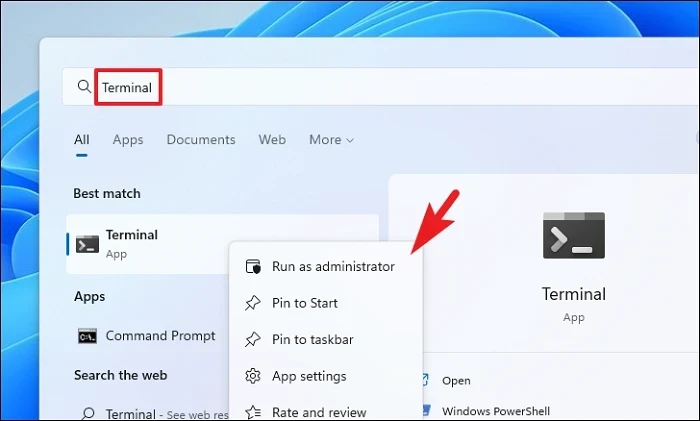
Step 2: If prompted by the User Account Control (UAC), click 'Yes' to allow administrator access.
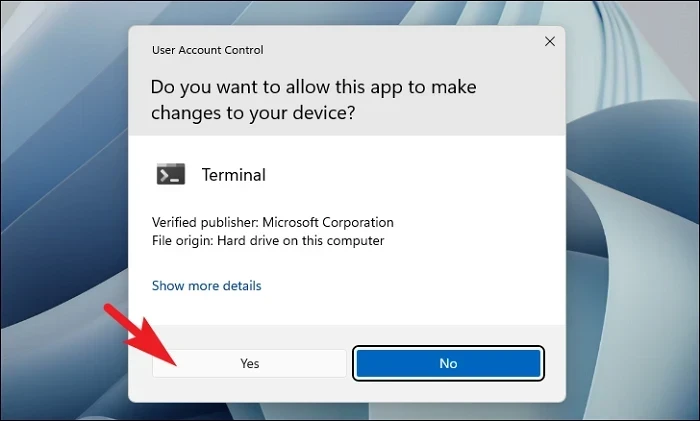
Step 3: In the PowerShell window, type Get-Volume and press Enter to list all the volumes on your system.
Get-Volume
Step 4: Identify the drive letter of the partition you want to delete. Then, type Remove-Partition -DriveLetter <drive letter> (replace <drive letter> with the actual letter) and press Enter.
Remove-Partition -DriveLetter FNote: Replace F with the correct drive letter of the partition you intend to delete.
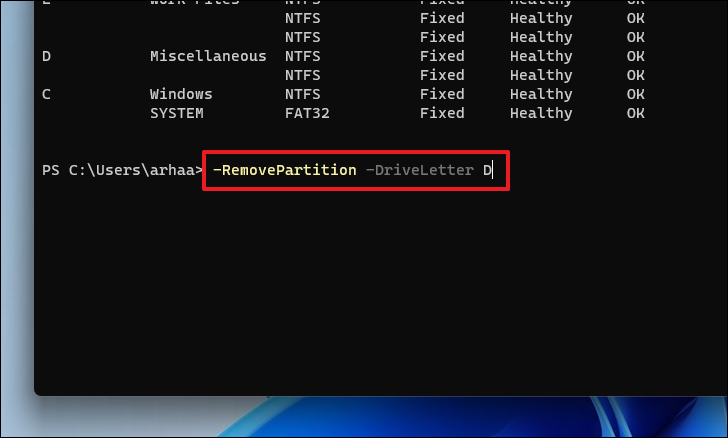
Step 5: You will be prompted to confirm the deletion. Type Y and press Enter to proceed.
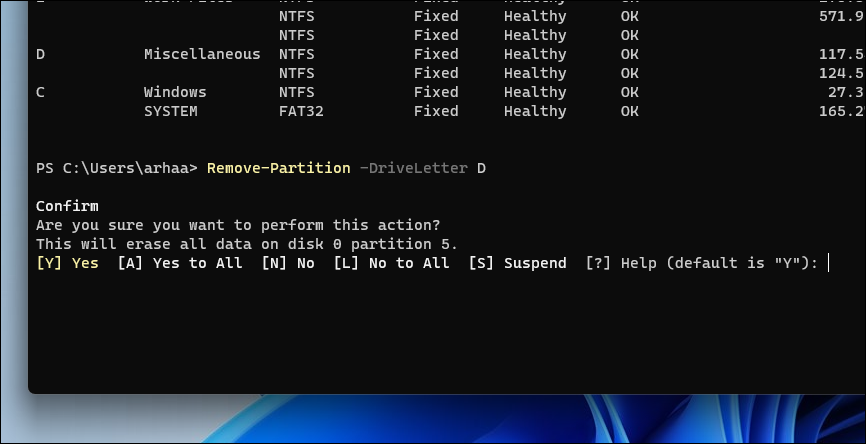
The partition will be deleted, and the space will be available for other storage management operations.
By following these methods, you can effectively delete partitions in Windows 11 to better manage your system's storage space.








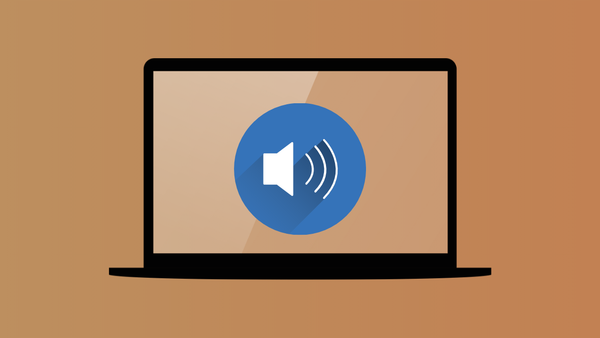


Member discussion